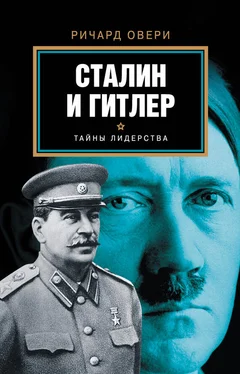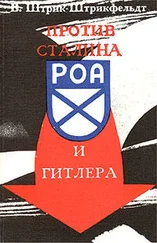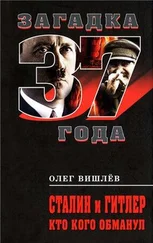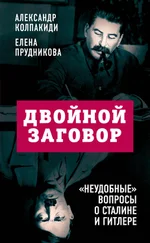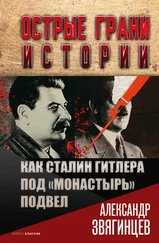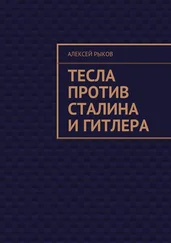91. Orlow, Nazi Party: II, pp. 226–7; H. Mommsen Beamtentum in Dritten Reich: mit ausgewählten Quellen zur nationalsozialistischen Beamtenpolitik (Stuttgart, 1966), pp. 103–4.
92. Roth, Parteikreis und Kreisleiter, pp. 234–5.
93. Roth, Parteikreis und Kreisleiter, p. 195.
94. Roth, Parteikreis und Kreisleiter, pp. 213, 215.
95. Orlow, Nazi Party: II, pp. 228–9.
96. Schmiechen-Ackermann, ‘Der “Blockwart”’, p. 586; Orlow, Nazi Party: II, pp. 72–3.
97. Avtorkhanov, Communist Party Apparatus, pp. 143, 199.
98. Münz, Führer durch die Behörden, pp. 6–9.
99. Roth, Parteikreis und Kreisleiter, pp. 122–3.
100. Roth, Parteikreis und Kreisleiter, pp. 139–44.
101. Broszat, Hitler State, pp. 112–17; on the Reichsstatthalter see H.-J. Sengotta Der Reichsstatthalter in Lippe 1933 bis 1939.
Reichsrechtliche Bestimmungen und politische Praxis (Detmold, 1976), pp. 41–59, 408–9.
102. Moll, ‘Steuerungsinstrument’, pp. 215–72; more generally on the Gauleiter see P. Hiittenberger Die Gauleiter (Stuttgart, 1969).
103. Fainsod, How Russia is Ruled, p. 199.
104. Fainsod, Smolensk under Soviet Rule, p. 98.
105. Mommsen, Beamtentum, p. 103.
106. Gill, Rules of the Communist Party, pp. 44–7.
107. Avtorkhanov, Communist Party Apparatus, pp. 103–4; Pons, ‘Stalinism and Party Organisation’, pp. 108–9.
108. B. Harasymiw Soviet Communist Party Offi cials: A study in organizational roles and change (New York, 1996), pp. 85–8.
109. B. Meissner ‘Die besonderen Wesenszüge der sowjetschen Bürokratie und die Wandlungsmöglichkeiten des Einparteisystems’ in Meissner, Brunner and Löwenthal, Einparteisystem, pp. 73–4; R. di Leo Occupazione e salari neWURSS 1950–1977 (Milan, 1980), pp. 38–9, 50.
110. Harasymiw, Communist Party Offi cials, p. 30.
111. Fenske, Bürokratie in Deutschland, pp. 45–7.
112. Fenske, Bürokratie in Deutschland, pp. 48–51.
113. See R. Koehl The Black Corps: the Structure and Power Struggles of the Nazi SS (Madison, Wise, 1983); the process of infi ltration and control is charted in A. Speer The Slave State: Heinrich Himmlers Masterplan for SS Supremacy (London, 1981).
114. Meissner, ‘Der besonderen Wesenzüge’, p. 77.
115. Fenske, Bürokratie in Deutschland, p. 45.
116. The party revived after Stalin’s death. See Y. Gorlizki ‘Party Revivalism and the Death of Stalin’, Slavic Review, 54 (1995), pp. 1–22.
117. See for example A. Unger The Totalitarian Party: Party and People in Nazi Germany and Soviet Russia (London, 1974).
118. Roth, Parteikreis und Kreisleiter, p. 143.
119. Harasymiw, Communist Party Offi cials, pp. 136–7.
120. Boterbloem, Life and Death under Stalin.
121. S. Davies ‘“Us Against Them”: Social Identity in Soviet Russia, 1934–41’, Russian Review, 56 (1997), pp. 70–89.
1. M. Fainsod How Russia is Ruled (Cambridge, Mass., 1967), p. 424.
2. N. Baynes (ed.) Hitler’s Speeches 1919–1939 (2 vols, Oxford, 1942), vol i., p. 504.
3. R. Tucker and S. Cohen (eds) The Great Purge Trial (New York, 1965), p. xv.
4. Fainsod, How Russia is Ruled, p. 423.
5. N. Leites and E. Bernant Rituals of Liquidation: the Case of the Moscow Trials (Glencoe, Ill., 1954), pp. 318, 322–3; see too People’s Commissariat of Justice of the USSR Report of Court Proceedings in the case of the Anti-Soviet ‘Bloc of Rights and Trotskyites’ (Moscow, 1938), pp. 625–7.
6. J. Stalin Works (13 vols, Moscow, 1952–5), vol. xiii, pp. 110–11, ‘talk with the German author Emil Ludwig’, 13 December 1931.
7. T. Rees and A. Thorpe (eds) International Communism and the Communist International 1919–1943 (Manchester, 1998), p. 35.
8. Fainsod, How Russia is Ruled, p. 159.
9. Leites and Bernant, Rituals of Liquidation, p. 12.
10. E. Alexander Der Mythos Hitler (Zurich, 1937), p. 395.
11. Baynes, Hitler’s Speeches, vol. i, p. 504, proclamation at the party congress, 1 September 1933.
12. Baynes, Hitler’s Speeches, vol. i, p. 299, Hitler speech to the Reichstag, 13 July 1934. Hitler reminded his audience that communism had brought ‘mass-terrorism’ to all parts of the world.
13. P. Weindling Health, Race and German Politics between National Unifi cation and Nazism 1870–1945 (Cambridge, 1989), pp. 382–5.
14. F. S. Zuckermann The Tsarist Secret Police in Russian Society, 1880–1917 (London, 1996), pp. 19–27; J. Daly The Security Police and Politics in Late Imperial Russia’, in A. Geifman (ed.) Russia under the Last Tsar: Opposition and Subversion (Oxford, 1999), pp. 217–34.
15. M. Broszat The Hitler State: the foundation and development of the internal structure of the Third Reich (London, 1981), p. 332. On political police forces see F Wilhelm Die Polizei im NS-Staat (Paderborn, 1997), pp. 24–35.
16. G. Leggett The Cheka: Lenin’s Political Police (Oxford, 1981), pp. 16–22, 342–6, 351–2; R. Conquest (ed.) The Soviet Police System (London, 1968), pp. 13–18.
17. Fainsod, How Russia is Ruled, pp. 425–8.
18. R. Shailet ‘Stalinism and Soviet Legal Culture’, in R. Tucker (ed.) Stalinism: Essays in Historical Interpretation (New York,
1977), pp. 164–6.
19. R. W. Thurston Life and Terror in Stalin’s Russia 1934–1941 (London, 1996), pp. 22–3; J. A. Getty and O. V. Naumov (eds) The Road to Terror: Stalin and the Self-Destruction of the Bolsheviks 1932–1939 (New Haven, Conn., 1999), pp. 145–7; D. Rayfi eld Stalin and his Hangmen (London, 2004), pp. 239–40.
20. K. McDermott and J. Agnew The Comintern: A History of International Communism from Lenin to Stalin (London, 1996), pp. 148, 151.
21. B. A. Starkov The Trial that was not Held’, Europe – Asia Studies, 46 (1994), pp. 1308–9.
22. E. Ginzburg Into the Whirlwind (London, 1967), pp. 130–37.
23. V. Z. Rogovin 1937: Stalin’s Year of Terror (Oak Park, Mich., 1998), pp. 286–8.
24. Starkov, The Trial that was not Held’, pp. 1304–5; Rogovin, 1937, pp. 497–9.
25. Starkov, The Trial that was not Held’, p. 1300; Thurston, Life and Terror, pp. 59–60.
26. Thurston, Life and Terror, pp. 124–5, 129–31; A. Knight Beria: Stalin’s First Lieutenant (London, 1993), pp. 90–93; G. T. Rittersporn ‘Extra-Judicial Repression and the Courts: Their Relationship in the 1930s’, in P. H. Solomon (ed.) Reforming justice in Russia, 1864–1996 (NewTork, 1997), pp. 216–19.
27. S. Beria Beria, My Father: Inside Stalin’s Kremlin (London, 2001), p. 44.
28. In general see M. Parrish The Lesser Terror: Soviet State Security 1939–1953 (Westport, Conn., 1996).
29. Baynes, Hitler’s Speeches, vol. i., p. 220.
30. J. Biesemann Das Ermächtigungsgesetzt als Grundlage der Gesetzgebung im nationalsozialistischen Staat (Münster, 1985), pp. 250–53.
31. H. Kaden and L. Nestler (eds) Dokumente des Verbrechens: aus Akten des Dritten Reiches 1933–1945 (3 vols, Berlin, 1993), vol. i, p. 29, Verordnung zum Schutz von Volk und Staat, 28 February 1933; see too Biesemann, Das Ermächtigungsgesetz, pp. 253–63.
32. Kaden and Nestler, Dokumente des Verbrechens, vol. i., p. 31; Broszat, Hitler State, p. 329.
33. Kaden and Nestler, Dokumente des Verbrechens, vol. i, pp. 34–8; Broszat, Hitler State, pp. 330–31. On the courts H. Koch In the Name of the Volk: Political justice in Hitler’s Germany (London, 1989), p. 4; H. Schmidt ‘Beabsichtige ich die Todesstrafe zu beantragen’: die nationalsozialistische Sondergerichtsbarkeit im Oberlandesgerichtsbezirk Düsseldorf 1933 bis 1945 (Essen, 1998), pp. 27–9; B. Dörner ‘Heimtücke’: Das Gesetz als Waffe (Paderborn, 1998), pp. 20 ff.
34. Koch, In the Name of the Volk, pp. 45–8.
Читать дальше
Конец ознакомительного отрывка
Купить книгу
